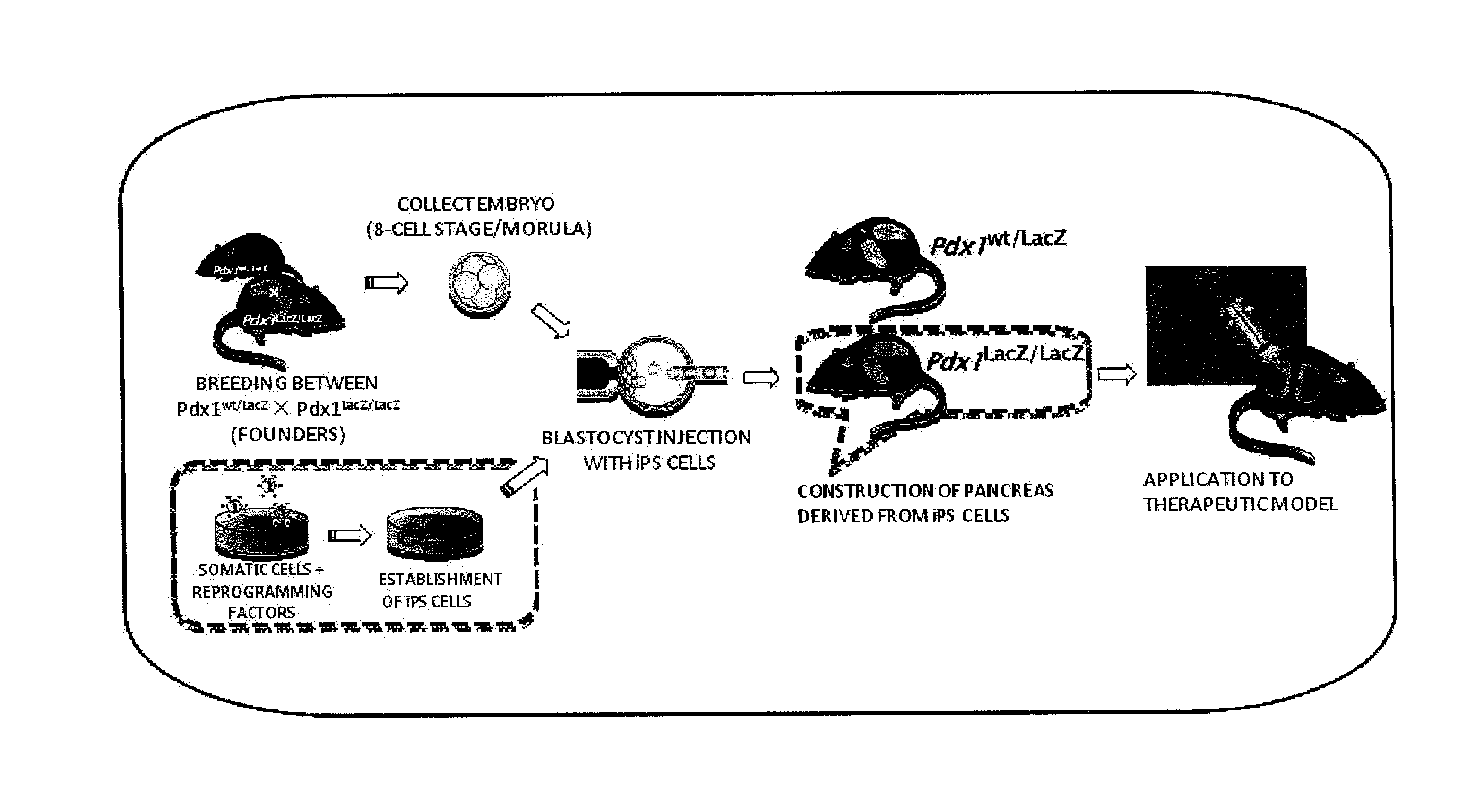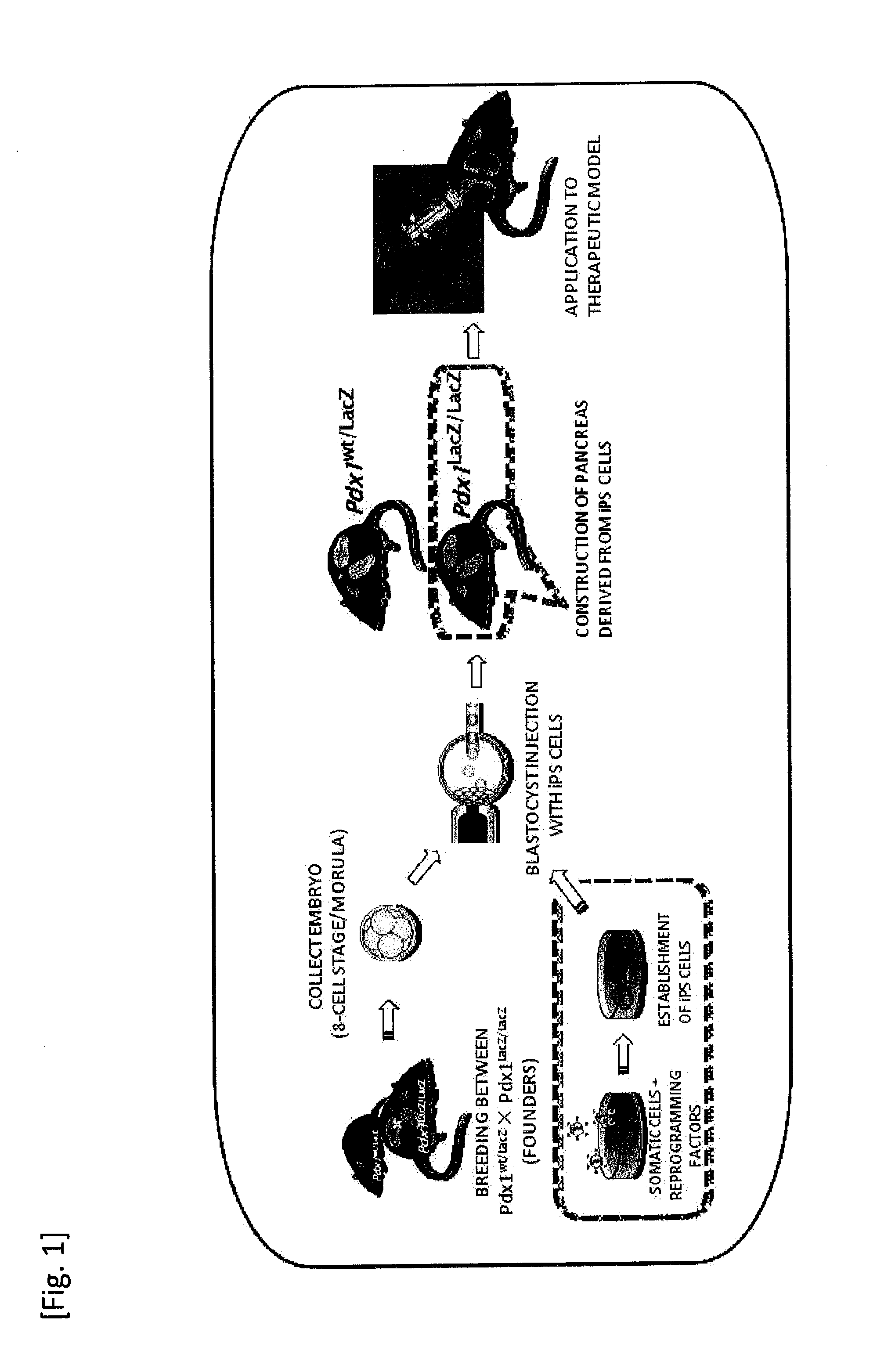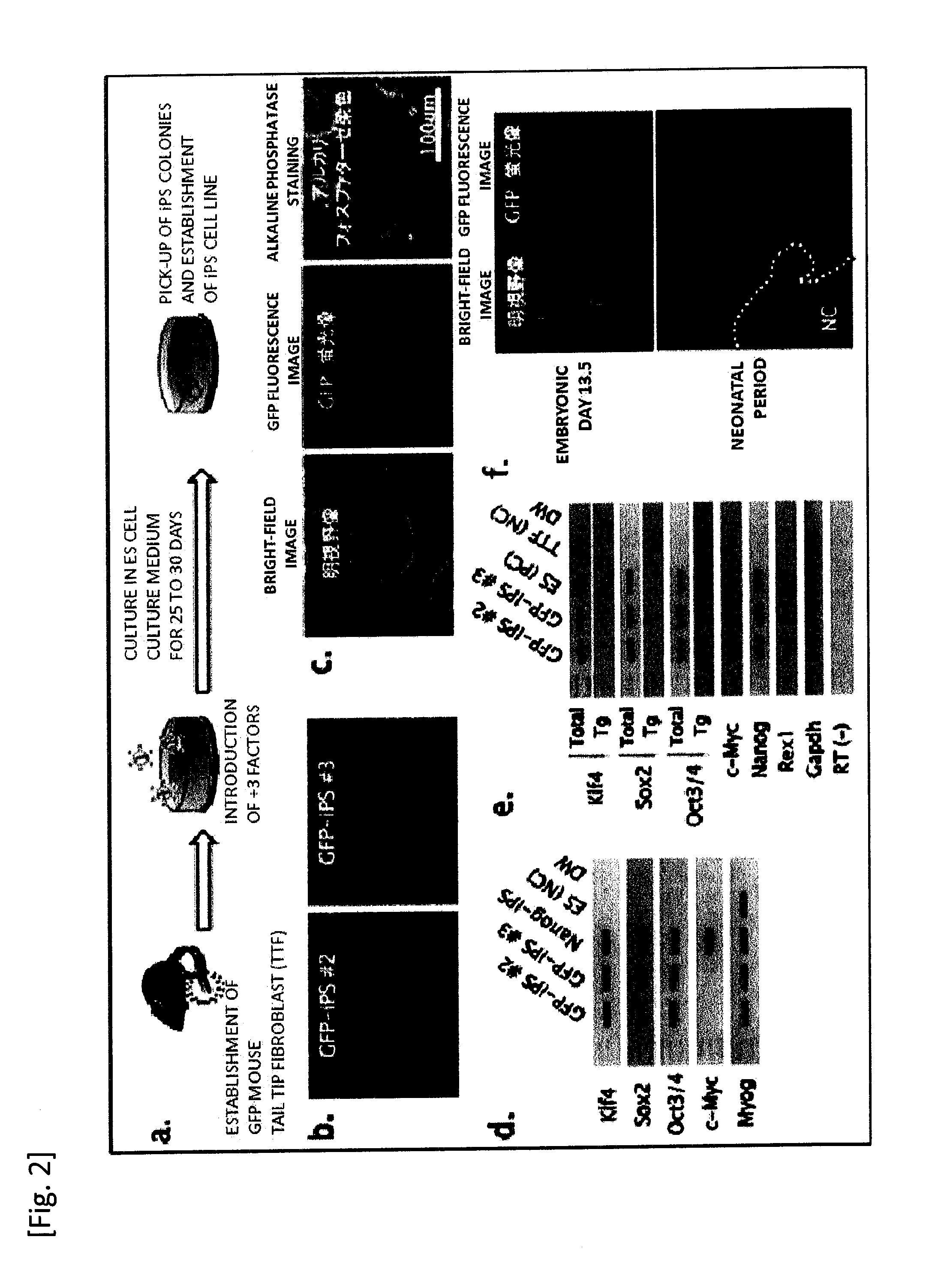ORGAN REGENERATION METHOD UTILIZING iPS CELL AND BLASTOCYST COMPLEMENTATION
a blastocyst and organ technology, applied in the field of organ regeneration methods utilizing ips cell and blastocyst complementation, can solve the problems of difficult differentiation into organs directed to the formation of complicated tissues through intracellular interactions during and after middle embryogenesis, and difficult induction of complex tissues through intracellular interactions
- Summary
- Abstract
- Description
- Claims
- Application Information
AI Technical Summary
Benefits of technology
Problems solved by technology
Method used
Image
Examples
example 1
[0192]In the present example, a mouse was selected to be a founder animal, and pancreas was selected as an organ to be defected. Further, for preparation of a knockout mouse that was characterized by pancreas deficiency, a Pdx1 gene was used.
[0193](Mouse Used)
[0194]As a knockout mouse that was characterized by pancreas deficiency, Pdx1wt / LacZ and Pdx1LacZ / LacZ (founders) were used. A blastocyst derived from a mouse in which LacZ gene had been knocked in (also knocked out) at a Pdx1 gene locus (Pdx1-LacZ knock-in mouse) was used.
[0195](Pdx1-LacZ Knock-In Mouse)
[0196]In regard to the production of a construct, it can be produced based on specifically the published article
[0197](Development 122, 983-995 (1996)). In brief, the procedure is as follows. As for the arm of the homologous region, a product cloned from a λ clone including the Pdx1 region can be used. In the present example, an arm donated by Professor Yoshiya Kawaguchi at the Laboratory of Surgical Oncology, Kyoto University ...
example 2
Example in Case of Kidney
[0259]In accordance with Example 1, organ regeneration of kidney was performed.
[0260]In the present example, it was investigated whether or not kidney development would occur by transplanting, as pluripotent cells, mouse iPS cells produced as described above into a knockout mouse that was characterized by kidney deficiency.
[0261]As the knockout mouse characterized by kidney deficiency, a Sall1 knockout mouse (donated by Professor Ryuichi Nishinakamura at Institute of Molecular Embryology and Genetics, Kumamoto University) was used. Sall1 gene is a gene of 3969 bp, encoding a protein having 1323 amino acid residues. This gene is a mouse homolog of the anterior-posterior region-specific homeotic gene spalt (sal) of Drosophila, and has been suggested by a pronephric tubule induction test in African clawed frogs to be important in kidney development (Nishinakamura, R. et al., Development, Vol. 128, p. 3105-3115, 2001, Asashima Lab, Tokyo University). It was repo...
example 3
Hair Development in Hair-Deficient Mouse Strain
[0273]In regard to hair, it was investigated whether or not hair development would occur by using nude mouse-derived blastocysts, and transplanting, as pluripotent stem cells, mouse iPS cells produced above.
[0274](Mouse Used)
[0275]The mouse used was a nude mouse purchased from Japan SLC, Inc. The nude mouse used was a sturdy nude mouse having a good breeding efficiency, which was produced when nu gene of a BALB / c nude was introduced into an inbred DDD / 1 strain mouse.
[0276]Mouse iPS cells were injected into blastocysts under a microscope using a micromanipulator. Mouse iPS cells into which GFP was introduced were used as the mouse iPS cells. Alternatively, a marked mouse iPS cell or the like which is equivalent to this may be used. The embryo after the injection was transplanted into the womb of a surrogate parent, and a litter was obtained.
[0277]The nude mouse is a spontaneous model. The mouse is deficient of thymus and hair, but does n...
PUM
| Property | Measurement | Unit |
|---|---|---|
| pH | aaaaa | aaaaa |
| diameter | aaaaa | aaaaa |
| shape | aaaaa | aaaaa |
Abstract
Description
Claims
Application Information
 Login to View More
Login to View More - R&D
- Intellectual Property
- Life Sciences
- Materials
- Tech Scout
- Unparalleled Data Quality
- Higher Quality Content
- 60% Fewer Hallucinations
Browse by: Latest US Patents, China's latest patents, Technical Efficacy Thesaurus, Application Domain, Technology Topic, Popular Technical Reports.
© 2025 PatSnap. All rights reserved.Legal|Privacy policy|Modern Slavery Act Transparency Statement|Sitemap|About US| Contact US: help@patsnap.com



